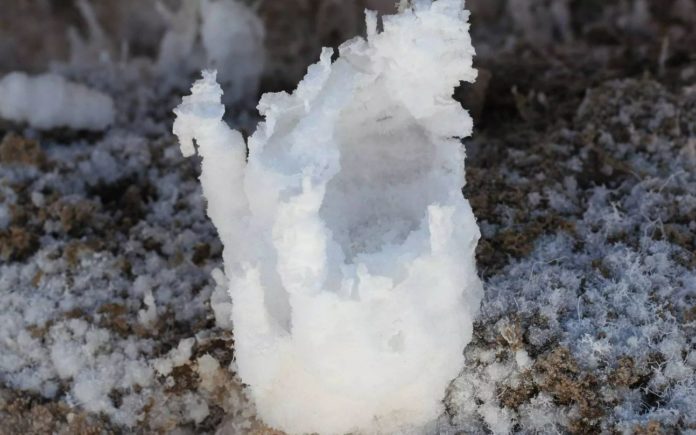Halite, often known as sodium chloride or salt rock, is a natural mineral that could become a new subject of geological research.
Researchers have uncovered ancient living traces trapped inside halite crystals that date back over 800 million years.
A geological team led by Sara Schreder-Gomes of West Virginia University uncovered the possibly groundbreaking discovery during an exploration in central Australia.
The organisms were recovered using transmitted light and ultraviolet–visible (UV-vis) petrography from the 830-million-year-old Browne Formation. The team discovered items that are “consistent in size, shape, and fluorescent response with cells of prokaryotes and eukaryotes and with organic compounds.”
Surprisingly, these organisms could still be alive. Despite popular perception that long-term exposure to radiation destroys all organic matter, it was determined in 2002 that material contained in 250 million-year-old halite was only exposed to trace levels of radiation. As a result, scientists are wondering if halite may likewise maintain creatures for 830 million years.
“Microorganisms may survive in fluid inclusions by metabolic changes, including starvation survival and cyst stages, and coexistence with organic compounds or dead cells that could serve as nutrient sources,” the authors reported.
Salts like halite don’t preserve biological stuff as well as rock, changing organisms into fluids trapped inside crystals rather than forming old microfossils. Nonetheless, they include useful scientific data such as water temperature at the time of crystal formation, water chemistry, and potentially even air temperature at the time of formation.
The results could pave the path for the discovery of life on Mars, where deposits comparable to Australia’s Browne Formation are thought to exist, according to the researchers.
“Ancient chemical sediments, both of terrestrial and extra-terrestrial origin, should be considered potential hosts for ancient microorganisms and organic compounds,” the researchers concluded.
Aside from extraterrestrial ambitions, the discovery could also provide insight into Earth’s own history.
Image Credit: Getty
You were reading: Scientists Find Radiation Exposed Life-Forms Thriving in Ancient Rocks
